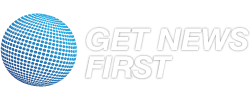
U.S. consumer spending rises; monthly inflation moderates
WASHINGTON (Reuters) - U.S. consumer spending increased steadily in August, supporting expectations of solid economic growth in the third quarter, while a measure of underlying inflation remained at the Federal Reserve’s 2 percent target for a fourth straight month.
FILE PHOTO: A woman shops in the Health & Beauty section of a Whole Foods in Upper St. Clair, Pennsylvania, U.S., February 15, 2018. REUTERS/Maranie Staab
Economists said Friday’s report from the Commerce Department should allay fears of the economy overheating and likely keeps the U.S. central bank on a gradual path of interest rate increases. The Fed raised rates on Wednesday for the third time this year and removed the reference to monetary policy remaining “accommodative.”
“Growth is solid and inflation pressures modest,” said Chris Rupkey, chief economist at MUFG in New York. “This is exactly the environment the Fed needs to move interest rates up at a gradual pace as further rate hikes start to look like tightening.”
The Commerce Department said consumer spending, which accounts for more than two-thirds of U.S. economic activity, rose 0.3 percent last month after an unrevised 0.4 percent gain in July. Spending last month was driven by outlays on healthcare, which offset a drop in motor vehicle purchases.
August’s increase in consumer spending was in line with economists’ expectations. When adjusted for inflation, consumer spending rose 0.2 percent after climbing 0.3 percent in July.
The report came on the heels of data on Thursday showing a decline in orders for key capital goods in August and a further widening of the goods trade deficit, which prompted economists to downgrade their gross domestic product estimates for the third quarter to as low as a 2.8 percent annualized rate.
The economy grew at a 4.2 percent pace in the second quarter, powered by robust consumer spending. Economists said data in hand suggested that consumer spending was on track to grow at about a 3.6 percent rate in the third quarter, close to the 3.8 percent pace set in the April-June period.
Consumer spending is being driven by a tightening labor market, which is starting to boost wage growth, as well as higher savings. It is also being supported by robust consumer confidence.
A separate report on Friday showed the University of Michigan’s consumer sentiment index at a six-month high in September. A survey earlier this week from the Conference Board showed consumer confidence hitting an 18-year high in September. The Conference Board places more weight on the labor market.
The dollar was trading higher against a basket of currencies, while U.S. Treasury yields fell. Stocks on Wall Street rose marginally.
EYES ON TARIFFS
In August, spending on goods increased 0.3 percent, likely lifted by higher gasoline prices. Spending on goods rose 0.5 percent in July. Outlays on services advanced 0.4 percent, with spending on healthcare accounting for much of the increase.
There was a moderation in monthly price gains in August. The personal consumption expenditures (PCE) price index excluding the volatile food and energy components was unchanged. That was the weakest reading since March 2017 and followed a 0.2 percent gain in July.
August’s flat reading left the year-on-year increase in the so-called core PCE price index at 2.0 percent. The core PCE index is the Fed’s preferred inflation measure. It hit the U.S. central bank’s 2 percent inflation target in March for the first time since April 2012.
Economists say inflation could slightly overshoot its target amid concerns an escalating trade war between the United States and China could lead to price increase for a range of consumer goods.
Washington on Monday slapped tariffs on $200 billion worth of Chinese goods, with Beijing retaliating with duties on $60 billion worth of U.S. products. The United States and China had already imposed tariffs on $50 billion worth of each other’s goods.
Walmart Inc (WMT.N) said last week it might hike prices because of the duties on Chinese imports.
“With this $200 billion increase, you are effectively tripling the amount of goods subject to a tariff and that has potential to influence prices,” said Tim Quinlan, a senior economist at Wells Fargo Securities in Charlotte, North Carolina.
In August, personal income rose 0.3 percent after increasing by the same margin in July. Wages jumped 0.5 percent, the biggest gain in seven months, after rising 0.3 percent in July. The saving rate was unchanged at 6.6 percent last month.
Reporting by Lucia Mutikani; Editing by Paul Simao and Andrea Ricci
Our Standards:The Thomson Reuters Trust Principles.
